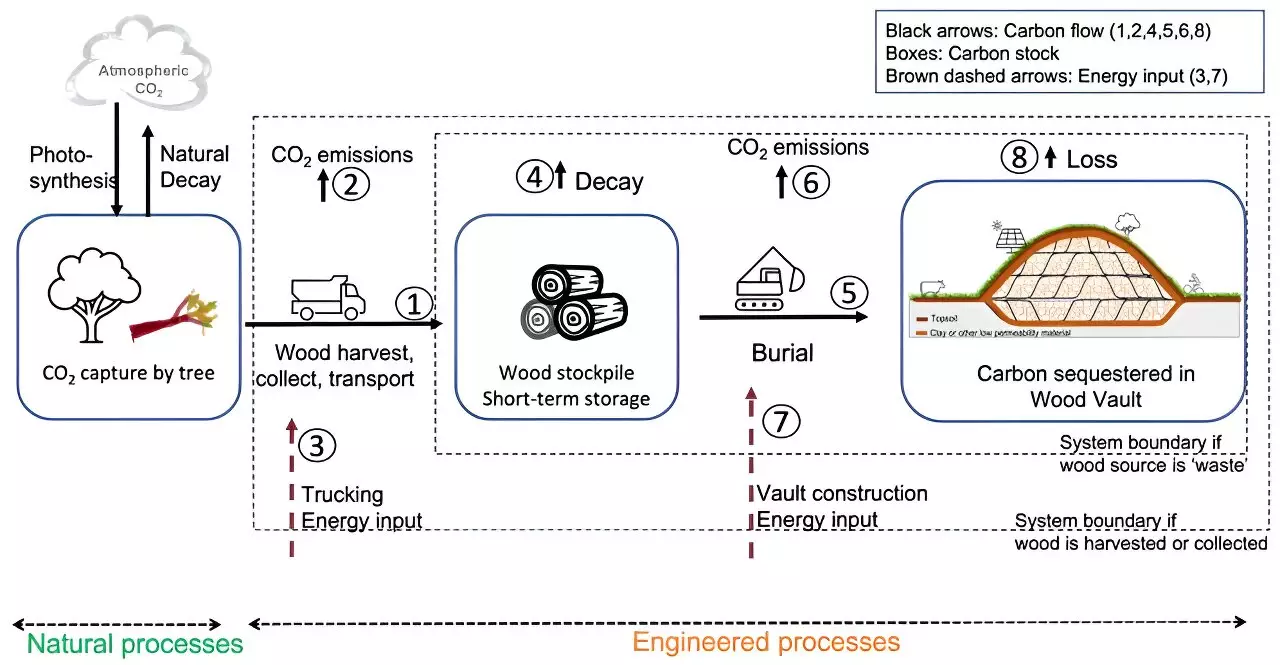As climate change continues to pose severe threats to global ecosystems and human livelihoods, innovative approaches for carbon sequestration are urgently needed. Researchers from the University of Maryland, collaborating with specialists from the Canadian Ministry of Agriculture, have recently proposed an intriguing, economically viable method for storing atmospheric carbon: burying biomass. Their findings, published in the journal Science, shed light on this unconventional approach to combating climate change, urging a reevaluation of how we think about carbon storage.
Understanding the Concept of Biomass Burial
At the heart of this research lies a simple yet powerful idea: plants naturally absorb carbon dioxide during their lifetime. Conventional wisdom suggests that once these plants die, they release the stored carbon back into the atmosphere. However, the researchers assert that if plants, or their biomass, are buried rather than left to decompose, their carbon sequestering capabilities can be preserved. The study highlights that this method could drastically curtail greenhouse gas emissions at a fraction of the current costs associated with existing carbon capture technologies.
Pioneering Findings: The Role of a Preserved Log
The researchers’ compelling case for biomass burial was supported by an archaeological discovery: a log buried under clay for almost 4,000 years. Upon analysis, it was found that the log retained an astonishing 95% of the carbon it once absorbed, showcasing the natural preservation potential of conducive environments. This finding significantly strengthens the argument for purposely burying biomass as a feasible method for long-term carbon storage.
One of the most notable advantages of this biomass burial strategy is its cost-effectiveness. Traditional carbon sequestration methods can incite costs ranging from $100 to $300 per ton, making them less accessible for widespread implementation. In contrast, the researchers estimate that burying biomass could lower this cost to approximately $30 to $100 per ton. This discrepancy not only makes the method more attractive but also ensures that more extensive adoption can be achieved without straining economic resources.
The researchers claim that this method could facilitate the sequestration of up to 10 gigatons of carbon dioxide annually. Given the scale of carbon emissions generated by human activities, this figure is particularly significant. By leveraging abundant soil types rich in clay, the proposed strategy poses an unprecedented opportunity to utilize existing resources for climate mitigation.
The research surrounding biomass burial as a robust carbon sequestration strategy opens new doors in the fight against climate change. By presenting a low-cost solution that can work in tandem with existing environmental practices, this innovative approach holds promise to complement the efforts towards stabilizing atmospheric carbon levels. It is imperative for policymakers and environmental advocates alike to consider and invest in such pioneering ideas, ensuring a sustainable future for generations to come.


Leave a Reply